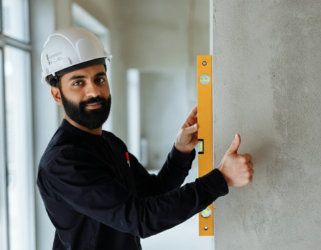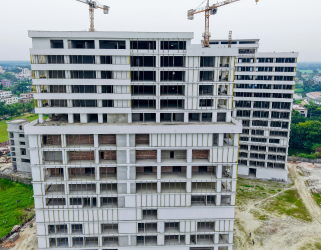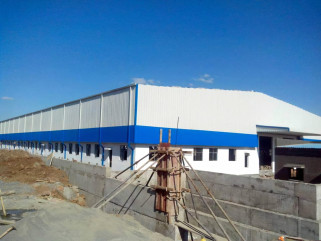Top Safety Protocols to Follow on Steel Structure Projects

When it comes to steel construction sites, safety is not just a requirement–it’s the backbone of a successful project. Every beam erected and every bolt tightened represents rigorous planning, teamwork, and, most importantly, the strict observance of safety protocols. But what does it truly take to ensure the well-being of everyone involved in these complex steel structure projects? Let's deep-dive into the top safety protocols and explore how they can safeguard both lives and livelihoods.
The Weight of Responsibility in Steel Construction
Picture this. It’s a crisp Monday morning, and your team is ready to hoist a massive steel beam into place. The crane operator is focused, signalers are communicating via radio, and workers on the ground are securing bolts. Suddenly, there’s a miscommunication about whether the area below has been cleared. An unwelcome scenario unfolds as the beam swings dangerously close to crew members. It’s a stark reminder of why every project's success depends on prioritizing steel structure safety.
Real-life situations like these show us the stakes. Steel structure projects aren’t just about constructing buildings; they’re about protecting the people who make these structures possible. Below are practical safety measures that go beyond checklists.
1. Strengthening Foundations with Risk Assessments
Before the first piece of structural steel touches your site, an extensive risk assessment should already be in play. Identifying hazards early is like creating a blueprint for construction site safety protocols.
Pro tip: Break your site into zones, such as areas for heavy lifts, material storage, and high-risk tasks like welding. Mark clear walkways for workers, keeping high-traffic zones separate from machinery operations. This not only maintains order but significantly reduces accidents.
One project manager shared this tip with me a while back–he invested extra time in detailed magnetic hazard maps. His team used color-coded markers for risks in different zones, and it worked like a charm. At the end of their steel frame project, they recorded zero incidents.
2. Gear Up for Protection
No safety list is complete without personal protective equipment (PPE). Steel construction sites are inherently risky, with sharp edges, falling materials, and high altitudes all part of the job. Ensuring that every worker is equipped with helmets, steel-toe boots, high-visibility vests, gloves, and safety harnesses is non-negotiable.
But it’s not enough to just hand out gear. Regular inspections of PPE are essential. Think of it this way–a harness with a worn-out strap isn’t better than no harness at all. Make it a habit to double-check the integrity of safety gear before workers set foot on-site.
3. Communication is the Real MVP
Miscommunication is a silent hazard on any construction site. That’s why steel erection safety guidelines place communication as a top priority. Clear hand signals, reliable two-way radios, and pre-shift safety meetings can mean the difference between smooth operations and costly errors.
I recall working with a seasoned foreman who had a knack for building rapport with his team. Every day, he would gather everyone for a quick, 10-minute "safety huddle." It wasn’t just about reading safety rules from a clipboard. He encouraged workers to share concerns or flag hazards they’d noticed. This practice helped identify minor issues before they had a chance to snowball into accidents.
4. Respect the High-Stakes Nature of Working at Heights
Working several stories above the ground comes with its own set of challenges. Steel erection often involves tasks performed on scaffolding or at precarious angles. Here, structural steel safety measures focus on fall prevention. Form strict protocols for safe scaffolding assembly, ladder use, and anchoring points.
For example, one construction site in Ohio reported success with their "100% tie-off policy." Workers were trained to use fall arrest systems religiously, ensuring they were secured at all times when working on elevated platforms. It didn’t just save lives–it improved morale knowing safety had no shortcuts.
5. Regular Training Builds a Culture of Safety
It’s easy to assume experienced workers know the ins and outs of safety in steel construction. But complacency can creep in without regular, refreshed training. Monthly workshops and hands-on sessions keep safety standards top of mind and provide opportunities to practice emergency responses.
Want to keep your team engaged during training? Add real-world scenarios or share videos that show both best practices and worst-case scenarios. Hearing first hand stories about on-site accidents can serve as a wake-up call that resonates deeply.
6. Equipment Maintenance Saves More Than Downtime
No matter how careful your crew is, malfunctioning equipment can turn a routine day into a disaster. Cranes, welding tools, winches, and hoists must undergo regular maintenance. Something as simple as a frayed wire on a hoist can pose catastrophic risks during heavy lifts.
Create a rigorous maintenance schedule for all equipment. Conduct pre-use checks, and don’t delay repairs when issues arise. A thorough logbook to track inspections can offer peace of mind and help demonstrate compliance if the need arises.
Turning Protocols into Routine Practices
Safety isn’t just a rulebook; it’s a mindset. Encouraging workers to speak up when they spot unsafe conditions and rewarding proactive safety measures reinforces the importance of vigilance. Building a strong safety culture requires top-down commitment from leadership and a shared sense of responsibility among every worker on-site.
Final Thoughts
Steel structure projects may be challenging, but they don’t have to be dangerous. From sharpening communication and staying diligent with equipment to fostering a safety-first culture, the protocols discussed above can transform how you manage risks.
At Metrosh, we don’t just understand the importance of safety in steel construction–we lead by example. With our unwavering commitment to safety excellence and innovative practices, we’re proud to be a trusted leader in civil construction. When it comes to setting the bar for safety and quality, you can count on us to rise to the challenge.
Popular Searches
Pre Engineered Buildings | Civil Construction | Hybrid Constructions
FAQs
1. Why is fall protection critical in steel structure projects?
It prevents injuries and fatalities from falls at high elevations, a common hazard in steel construction.
2. How are cranes and hoisting equipment safely used in steel projects?
Use trained operators, inspect equipment, and ensure clear communication and safe lifting zones.
3. How is structural stability maintained during steel erection?
Secure temporary bracing, follow erection sequences, and ensure proper bolting and alignment.
4. How often should safety inspections be conducted on steel structure sites?
Daily, at key project stages, and after significant changes or weather events.
5. What role does site access control play in ensuring safety?
It keeps unauthorized people out, ensuring only trained, equipped workers are in hazardous areas.
Related Articles

Why Pre-Engineered Buildings Are the Ultimate Cost-Saving Solution?
24 Sep 2025
Strong, Durable, and Long-Lasting: The Structural Superiority of PEBs
23 Sep 2025
Quality Control in Civil Construction: Metrosh Infra’s Standards and Practices
22 Sep 2025
Cost-Efficiency in Hybrid Construction: Balancing Budget and Quality
22 Sep 2025
Building the Future: Metrosh Infra’s Approach to Turnkey Civil Construction
20 Sep 2025


